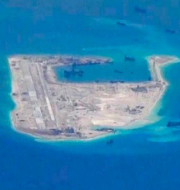China-ASEAN: Framework for Code of Conduct
China Sea dispute is island and maritime claims among several sovereign states within the region, which includes Brunei, the People’s Republic of China (PRC), Malaysia, Indonesia, the Philippines, and Vietnam. The sea has abundance of minerals and mineral oil in its bed as well as perfect scope for fishing and therefore the claimants are consistently in conflict. Especially, China has a specific claim over the nine-dash line which covers a large part of the South China Sea.
To prevent the rising disputes in the area, ASEAN has come forward. On 6th August 2017, Foreign Ministers of China and Association of South East Asian Nations (ASEAN) have adopted the framework for crafting code of conduct on South China Sea disputes.
The framework for code of conduct is the reaffirmation of 2002 Declaration of Conduct of Parties which was ignored by the claimants including China.
The framework as termed by the parties is an outline for how the code will be established. The adoption of framework of the code was so long a dream of ASEAN members so as to make China sign the legally binding code as China was ignorant of their sovereign rights.
However, the critics of the code have contrary opinion as they say that after so many deliberations, failure to outline as an initial objective the need to make the code legally binding and enforceable or have a dispute resolution mechanism, raises doubts about how effective the pact will be. The critics also opine that it is just to buy time for China to strengthen its naval power. They also say that there has been no clarity provided of the code which has weakened the position of ASEAN members.


